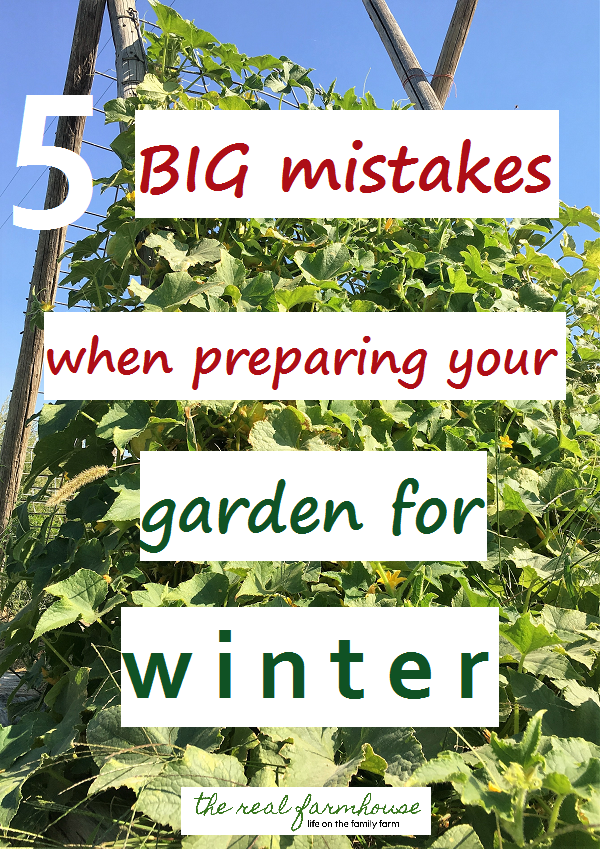
I can feel it in the air! I love this season! The mornings get a little bit crisp, the sun isn’t up as late in the evenings, and you start feeling ready to just cozy up for the winter. It’s time to start thinking about how you are going to put your garden to bed. In a few weeks or months, depending on where you live, you will need to prepare your garden for the winter months.
There are a lot of great things you can do for your garden in the fall and winter. Today, instead of going over the hundreds of ways to winterize, I wanted to share 5 mistakes people make this time of year.
- Churning or tilling your garden. At the end of the season, when everything is dying off and looking sad, it’s very tempting to rip everything out and churn or till the dirt so it looks all pretty and fresh. One of my favorite things in the garden is fresh turned dirt, so trust me, I know how tempting it is! Here is why you should not churn the dirt … By turning over your soil, you are exposing all of the good stuff in your dirt to harsh winter conditions. Wind, cold, and even dry air, can hurt or kill the good stuff in your dirt. On top of that, you’re leaving your precious soil unprotected from the wind for several months. All that top soil that you just loosened up will be blown over into your neighbors yard come spring. If you can’t handle not churning your garden at the end of the season, please make sure to cover it properly with mulch or a tarp or something to protect it.
- Ripping everything out. You know how complicated seed saving sounds? Well let me un-complicate it for you real fast. The easiest way to replant your garden with seeds from the year before is to do nothing. Nothing at all. If you let your plants go to seed (that means do nothing, just let them keep growing even after they have given you their fruit) and leave them alone all winter, they will drop their seeds or fruit right where they are, and replant themselves next spring. Then you can pull everything out in the spring, churn your soil, and see what starts popping up in your garden. You will have free plants all over the place that you can either leave where they are or move them to where you want them. You may end up with some surprise varieties and things you have no idea what they are, but that’s where all the fun starts! A couple years ago we had some tomatoes pop up, I just let them grow where they were, and they turned out to be these huge pink monsters that I had no idea where they came from. The kids loved them, and we let them go to seed again and had more pink tomatoes the next year. If you rip everything out, you’re taking away all those seeds that could have grown for free the next year on their own. Just leave everything alone and see what happens.
- Not draining your hoses and drip systems. Hoses and drip systems can add up to quite a bit of money. With a little extra TLC, these things can last several years longer than they would have. If you leave them out in the weather full of water, they will freeze and crack. Your hoses will probably have holes in them the very next year. They also get brittle and hard to bend when they have been out in the weather for a long time. All you need to do to take care of your hoses is drain the water out of them at the end of the year, roll them up, and put them somewhere out of the weather.
- Pruning soft plants right before cold weather. Some plants can handle it and some can’t. As a general rule, if I can’t get it pruned before the first frost then I wait until spring to cut it back. There are some exceptions to this rule, but if you don’t know the guidelines for the plants your pruning, it’s better to be safe than to lose a plant. If you cut a plant back right before cold weather and it it is not a tough one, then it could very well kill it. If it doesn’t kill it, it could make it sick, or set it back a few weeks in the spring. Lots of plants need a few weeks of mediocre weather to recover after being pruned and before the consistent freezes start. Otherwise, they can’t protect themselves properly in the cold.
- Letting things dry out. It’s the end of the season, you have been working hard all summer to take care of your little plants. They grew, you watered them, you weeded them, they fruited, you watered them, you harvested them, you watered them, maybe even preserved them, and now you are ready for a break. The last thing you want to do is keep watering your garden. But you need too. The most important things to not put to sleep thirsty are the perennial plants you expect to survive the winter. But right behind that, is the rest of your garden. Even the dirt that doesn’t have anything growing in it should not be allowed to dry out completely before the cold sets in. Believe it or not, water is a great protector for your plants against frost. The orchards around here turn the sprinklers on when it’s going to freeze. By morning, the trees are covered in ice, and I think that can’t possibly be good for the trees. But it is! It’s one of the best ways they can protect their trees against the cold. Your dirt is full of living things that need water. Keep it happy just until winter sets in. Your plants and your dirt will be a lot better off in the spring if you put it to bed with some moisture.
Keep your garden happy for a few more weeks. Avoid these 5 mistakes and your garden will be as happy as can be, all winter long.
Does anyone else have a mistake to add to the list?
~Farmer’s Wife
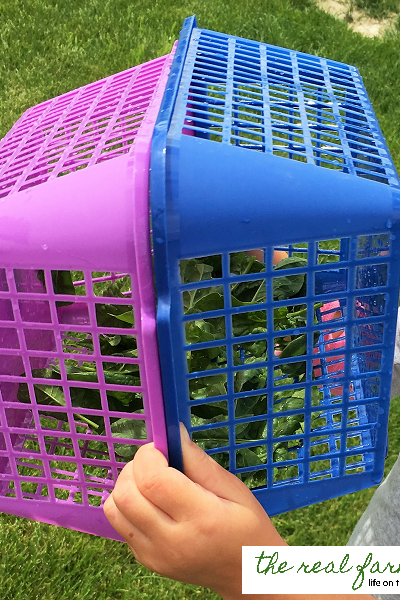
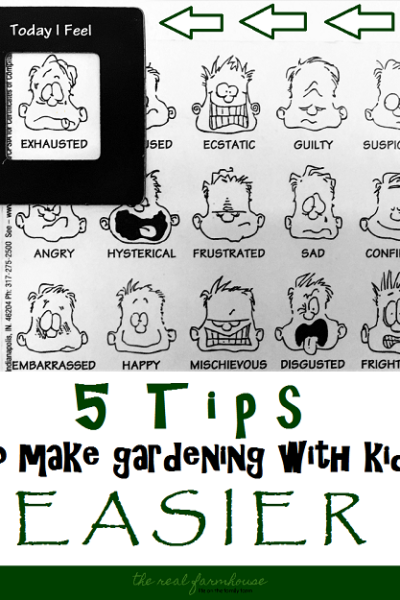
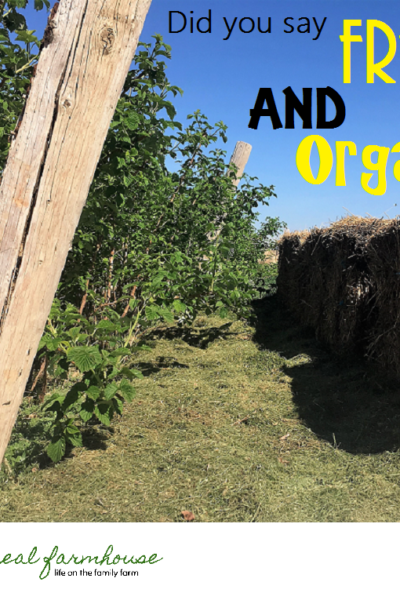
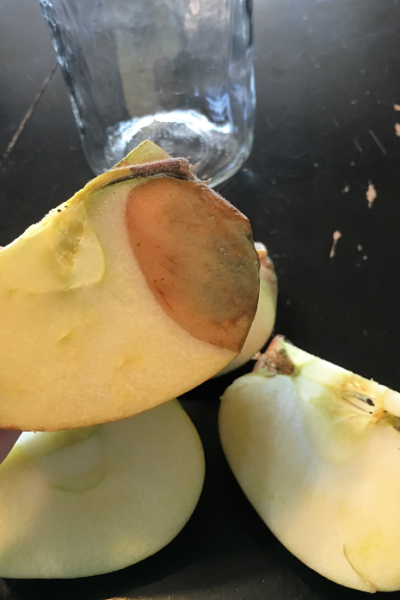
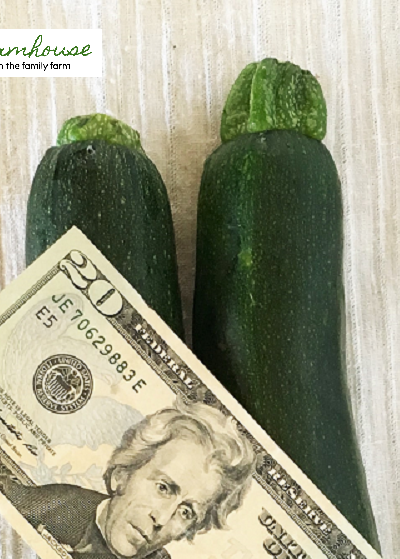
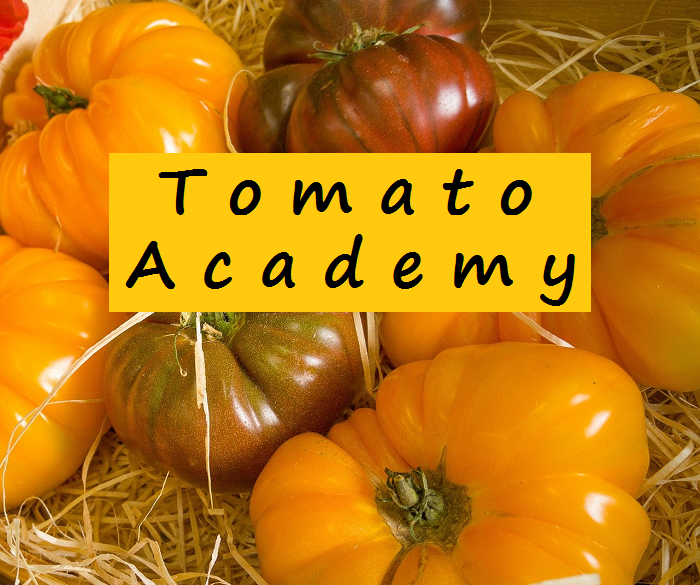
My husband has the idea that burning everything off at the end of the growing season creates ash that will be good for plants. And burning at the beginning of the season, before tilling and planting. I don’t think all that ash is so great for all plants. Some things didn’t come up at all, and seedlings I planted did not grow. What’s the word on this?
A little bit of ash can be good for some plants, but by burning everything you are getting rid of some of the other beneficial things. If you burn all of it off, you will need to add in some things that you wouldn’t have needed to if you just left it. The heat can also kill parts of your “living” dirt. Your husband is correct that ash is helpful, but I wouldn’t burn everything if it were me, your destroying too many other good things. In my garden I pull out the big stuff in a pile to burn, then I sprinkle the ash throughout the garden. That way, it will still be benefiting from the ash but I didn’t scorch everything else.